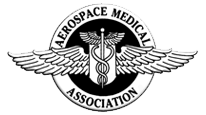Adapted from “Health for Pilots” by Paul Gahlinger, MD, AME
What causes motion sickness?
Motion sickness has been a common problem ever since the beginning of vehicle travel thousands of years ago. It was well known during Biblical times as “camel sickness”—the gentle swaying caused nausea in many riders (in fact, Lawrence of Arabia was often sick to the point of incapacitation from his long camel journeys). When traveling by sea became widespread, the name changed to seasickness. The word nausea actually comes from the Greek “naus” meaning ship. More recently, we have carsickness, airsickness, space motion sickness, simulator sickness, and virtual reality motion sickness.
Motion sickness is not a disorder. It is a normal response to an abnormal stimulus. All types of motion sickness are due to the same basic problem: a disagreement between the information you get from your eyes and the information from the vestibular organs of your inner ears—between what you see and what you feel. The result is a confusion in your brain’s normal sensory awareness processing. Something doesn’t feel right. This is the same sort of sensory disturbance that might result from eating toxic or spoiled foods. The body is programmed in this case to get rid of the food as fast as possible. This is why motion sickness causes vomiting.
Airsickness is the main concern for pilots. Surveys show that incapacitating airsickness occurs in 29 percent of airline pilots. Motion sickness is even more common when using a flight simulator, and up to 70 percent of pilots are affected. Surprisingly, the best pilots are the most susceptible. This is probably because they are more familiar with how the simulator should act, and when it doesn’t, the difference between visual and vestibular senses is more obvious.
Motion sickness is familiar to most people: it begins with an uncomfortable sensation that is often called “stomach awareness.” This leads to increased salivation, swallowing and burping. Sometimes, there is less stomach discomfort and more of an overall sense of feeling drowsy or tired, with perspiration, difficulty concentrating, and mental confusion. All of these feelings can quickly progress to outright nausea and vomiting. That usually makes the person feel slightly better, but the unfortunate ones who are most affected go on to repeated bouts of retching and diarrhea.
There is no way to predict who is going to become motion sick. A number of factors increase your likelihood:
· Youth: susceptibility to motion sickness begins at about age two, increases to a peak in adolescence, and then steadily diminishes with passing years—a minor blessing of old age.
· Females tend to be more susceptible than males. This is especially true during menses or pregnancy, or if they use birth control pills.
· Athletes are more susceptible. Why? Probably because people who are fit tend to have highly tuned senses and are more likely to notice sensory conflict.
· Anxiety and stress increase motion sickness.
· Large meals, especially those high in salt, protein, or dairy products.
· Alcohol
· Smoking
· Bad odors; it is best to get cool, fresh air
· Abrupt head movements; it is best to move slowly rather than sharply bobbing or swiveling the head
Because motion sickness is caused by a conflict of senses, it tends to go away as the person becomes accustomed to this conflict and accepts it as natural. This is why seasickness usually resolves within a day or two. The problem with flying is that pilots rarely stay aloft that long.
Once people experience motion sickness, they are much more likely to get it again. They will quickly recognize the uncomfortable sensation and they know what is coming next. Some pilots who have often become airsick will start to feel nauseated even if they just look at an airplane or smell aviation fuel. By that point, it takes a lot longer to reverse the tendency to airsickness
Simulator sickness
Simulator sickness is slightly different from the usual airsickness. The most often reported symptoms are eyestrain, blurred vision, difficulty focusing, and visual flashbacks, with occasional headache and difficulty concentrating. Some pilots, even those who never have any problems during flight, get a little unsteady on their feet after being in a simulator for several hours. The FAA recommends that pilots do not fly, or even drive, for a few hours after an extended session in a simulator. If the simulator is a very high-quality cockpit substitute, the effects are more severe and the FAA recommends delaying actual pilot-in-command flight for 12 hours.
Motion sickness medications
All standard motion sickness medications cause drowsiness or other mental impairments. They also have many other side effects, such as visual disturbances and dry mouth. Because of this, the FAA does not allow the pilot in command to use motion sickness medication. (The military makes an exception, and may allow pilots to use a combination of scopolamine and dextroamphetamine, “scop-dex.”)
The most common motion sickness medications are antihistamines, including diphenhydramine (e.g, Benadryl), meclizine (Antivert), dimenhydrinate (Dramamine), cyclizine (Marizine), and buclizine (Bucladin-S). In general, they cause some drowsiness but are otherwise relatively safe and can also be used by children. They are available without prescription, but none of them are allowed by the FAA.
The most effective motion sickness remedy is scopolamine, usually taken in the form of a patch placed behind the ear. This medication works slowly as it leaches into the skin and the effects continue for a long time—a single patch will last for about three days. Scopolamine also has the worst side effects, with visual problems and even severe mental effects in some people. Users must also take great care in handling the patch. If the hands are not washed immediately after, touching an eye can result in a horrendously enlarged pupil. Scopolamine (Transderm Scop) patches are available only by prescription.
Other very effective motion sickness medications include the anti-nausea drugs promethazine (Phenergan) and trimethobenzamide (Tigan). These are available by prescription, and may be combined with ephedrine to minimize drowsiness, but are not allowed by the FAA..
Airsickness medications can be very useful while training since they allow the pilot to become accustomed to the sensations of flight without becoming ill. However, they may be used only when accompanied by an instructor pilot or so long as you are not acting as pilot-in-command.
If you are worried about becoming airsick, it is useful to experiment with medication during your training flights. Once you feel comfortable flying while using medication, begin flying without the medication but only on calm days and doing only mild, gentle maneuvers. Then gradually increase exposure to more extreme maneuvers. The best way to combat airsickness is to take it easy. You must condition your body to accept the sensory disturbance as a normal feeling.
Does ginger root work? Does the FAA allow it for pilot use?
Ginger root has long been used in traditional Chinese medicine to prevent nausea. There is some evidence that it can alleviate motion sickness. It is taken as a powder, in tea, or as candied ginger. Some people even chew the fresh root, although it has a very sharp taste. The FAA does not specifically prohibit the use of any herbal remedy, but prohibits use of any medication, substance, or supplement that might impair performance. Since ginger is unlikely to cause any side effect, it is allowed.
In summary, ginger root appears to be safe and may be helpful for some people. You should inform your AME if you are taking ginger for this purpose, or any other supplements or herbal remedies. MORE ON GINGER ROOT
How about those acupressure wrist bands?
Many people claim that acupressure relieves motion sickness. Elastic wrist bands and an electrical stimulating device are available. The point to be stimulated is on the front forearm, about 1.5 inches from the wrist crease, called the P6 point in acupuncture. A number of studies have been undertaken to see if stimulating this point is effective in preventing motion sickness. The results have not been impressive. On the other hand, the practice does not cause any harm, so if it works for you, great, but I wouldn’t count on it.
How to prevent airsickness without medication
With enough sensory disturbance, everyone will eventually experience some degree of motion sickness. The best way to avoid it is by minimizing the sensory conflict, and by a process of adaptation so that the conflict is less bothersome. The military uses a program of “G Awareness Maneuvers” to prepare candidates for aerobatics and dogfighting. They do this with a series of brief flight maneuvers, gradually increasing in intensity, never progressing until the pilot is comfortable with the milder maneuver. In this way, a steady accommodation is allowed. You can do the same with training flights or by hitching a ride as a passenger.
To prevent motion sickness before flight:
- Eat a light, non-spicy snack 2-3 hours before flight. Avoid large or spicy meals, or a completely empty stomach. Also avoid alcohol.
- Do not smoke.
- Become familiar with the planned flight, where you will go and what maneuvers will be done. Do not do aerobatics with another pilot without fully briefing each other before takeoff.
- Wear light, loose clothing that allows free movement.
- Relax. Try to deal with any anxiety about the flight or other conditions by resolving problems or discussing them with your instructor. Try to get to know your instructor on a personal level so that there is trust, understanding, and good communication.
To prevent motion sickness during flight:
- Concentrate on flying tasks, keeping the aircraft straight and level or in a precise turn. It is especially useful to keep pitch and vertical changes to a minimum.
- Focus on the horizon, if you have one. If in instrument flight, pay even more attention than usual to the Attitude Indicator, with its artificial horizon.
- Open the vents to get some fresh, cool air on your face.
- Use supplemental oxygen if it is available.
Flicker vertigo
About 1 in 4 pilots have been annoyed or distracted by flicker at some time in their careers. This happens most often with helicopter pilots, but also occurs in propeller aircraft on the ground with the engines idling, or with flashing or rotating lights reflecting off cloud or other surfaces. Some people are abnormally sensitive to low-frequency flashing lights and may even suffer epileptic seizures. Most people simply feel a sense of annoyance or discomfort, with pain in the eyes, headache, a sense of movement, spinning or nausea, and drowsiness. Studies show that about 4 to 6 percent of helicopter pilots have abnormal brain waves during low-frequency light flashes, but do not show any problem in performance. About 1 in 20,000 has a more severe reaction and should not fly.



